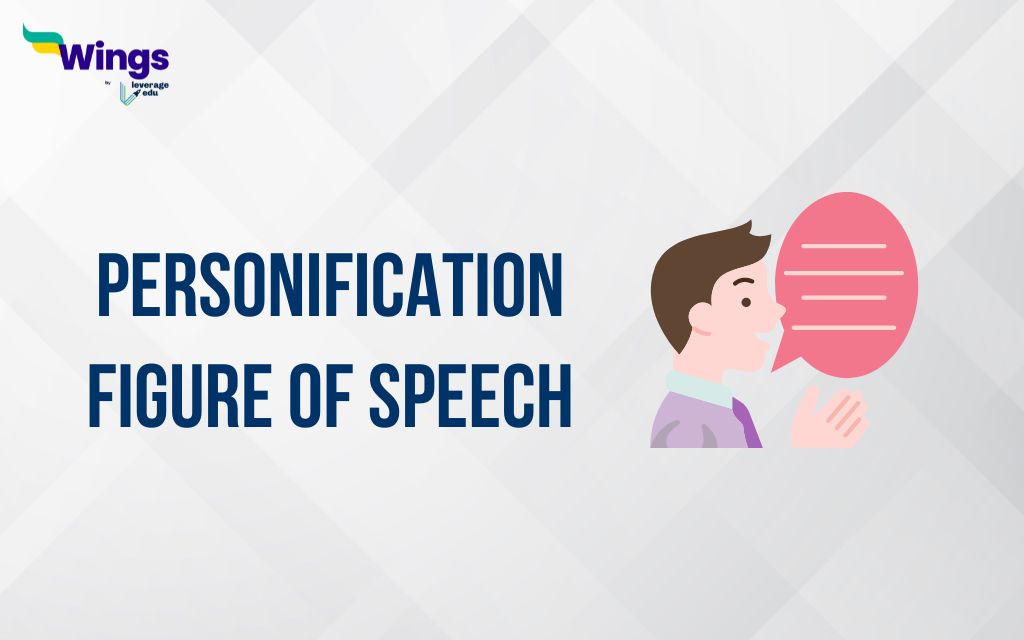Personification is a figure of speech in which human traits are attached to an impersonal aspect, an inanimate object, or an animal. In English, figures of speech, also known as rhetorical devices, are employed to make one’s words appear descriptive, vivid, and symbolic. You will be introduced to personification, one of the figures of speech, in this article along with examples to help you comprehend its meaning and application.
Read on to know more about Personification Figures of Speech.
Contents
Things to Consider While Using Personification Figure of Speech in a Sentence
Personification can be used in a sentence to provide a succinct description of something as well as to give the object or virtue being personified a deeper significance and connection. It cannot, however, be utilized in formal essays, any professional or technical writing, or to communicate literal meaning because it is figurative.
Ensure that your sentence makes sense before using personification. Personification must only be used when necessary, just like every other figure of speech. Personification can be utilized in writing to help readers identify with both human and non-human characters. Using the appropriate verbs to express what you want to say is the only thing you need to be careful about.
Know All About Communication Skills
What Purposes Does the Personification Figure of Speech Serve?
Personification stands out among literary devices because it uses language in a non-literal way to express concepts and thoughts. Why would a writer employ non-literal language? Let’s go over some justifications for this writing strategy.
Describe Ideas in More Clarity
It is possible to more clearly and concisely express notions and ideas by giving nonhuman creatures or inanimate objects life. Consider the well-known “birds and the bees” discussion as an illustration. Personifying birds and bees make the idea more straightforward and makes it easier to communicate. It is a personification as well as a metaphor.
Energize the Text
Personification can invigorate a work in poetry or literature by physically bringing uninteresting subjects to life. A reader can be far more engaged by having trees, animals, or even objects interact with characters than they would be if they were genuinely portrayed.
Set the Scene
Personifying different plot components can help to establish a story’s world and setting. Depending on how the personification is handled, items might either appear vibrant or frightening in a story’s world. In a horror story, a home might, for instance, take on a life of its own and start moving around.
Examples of Personification Figure of Speech
Look at the examples of personification figure of speech:
- Time flies when you’re having fun.
- My heart danced when he walked into the room.
- Lightning danced across the sky.
- My clothes stood so erect as if someone had ordered them to stay in attention, as soon as I had ironed them.
- The moon played hide and seek with the clouds.
- The hair on my arms stood after the performance.
- The thunder was grumbling in the distance.
- Why is your plant pouting in the corner?
- The sun kissed me while I was clicking a picture.
- The wind howled in the night.
- The cactus saluted those who drove past.
- The approaching car’s headlights winked at me.
- My flowers were begging for water.
- The wind is whispering outside.
- Additionally, that picture says a lot.
- The car complained as the key was roughly turned in its ignition.
- Her eyes are not smiling at us.
- Also, my brain is not working fast enough today.
- Rita heard the last piece of pie calling her name.
- The stars were sparkling and winking at all of us.
- Those windows are watching us.
- My alarm clock yells at me to get out of bed every morning.
- Our coffee maker wishes us good morning.
- The sun kissed my cheeks when I went outside.
- The leaves waved as we passed by.
- The wildfire ran through the forest at an amazing speed.
- The flowers danced to the wind.
- The door protested as it opened slowly.
- I felt like the food kept calling me.
- My house is a friend who protects me.
- The ivy wove its fingers around the fence.
- The moon smiled at the stars in the sky.
150 Useful Idioms with Examples, Sentences & Meanings
Difference Between Personification and Anthropomorphism
Due to their underlying similarities, anthropomorphism and personification are frequently mistaken. But these two literary devices differ from one another. When human traits or qualities are ascribed to animals or deities rather than inanimate objects or abstract concepts, this is known as anthropomorphism. Anthropomorphism is a literary device that simulates human behavior in an animal or deity. This is represented in Greek tragedies when gods would show up and get involved in people’s affairs.
Hence, personification can be used more broadly as a literary device by incorporating inanimate objects and abstract ideas, whereas anthropomorphism is restricted to animals and deities. Personification enables authors to give nonhuman things human traits without anthropomorphizing them into human-like characters as is done with anthropomorphism.
Stay in tune with Wings by Leverage Edu, to read more interesting blogs.
Subject-Verb Agreement | Examples, Rules, Exercises
FAQs
Ans. Personifying an object is the literary practice of giving it human characteristics in order to create a vivid mental picture of that object in the reader’s mind.
Ans. Some examples of personification are: 1) I wandered lonely as a cloud. Here cloud is given human quality to feel lonely. 2)In the moonlit sky, the stars shone cheerfully.
Ans. Personification can be utilized in writing to help readers identify with both human and non-human characters.
 One app for all your study abroad needs
One app for all your study abroad needs














